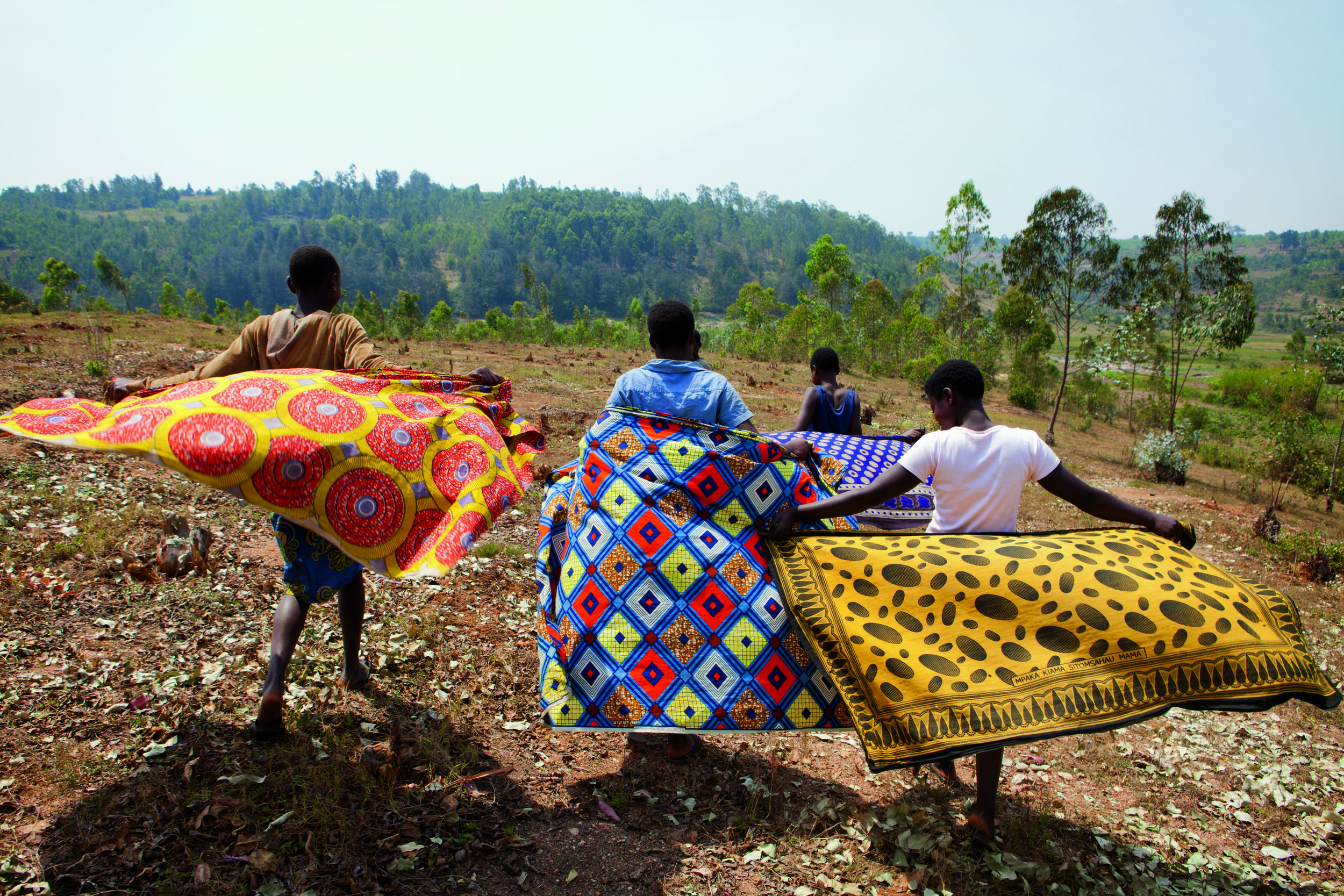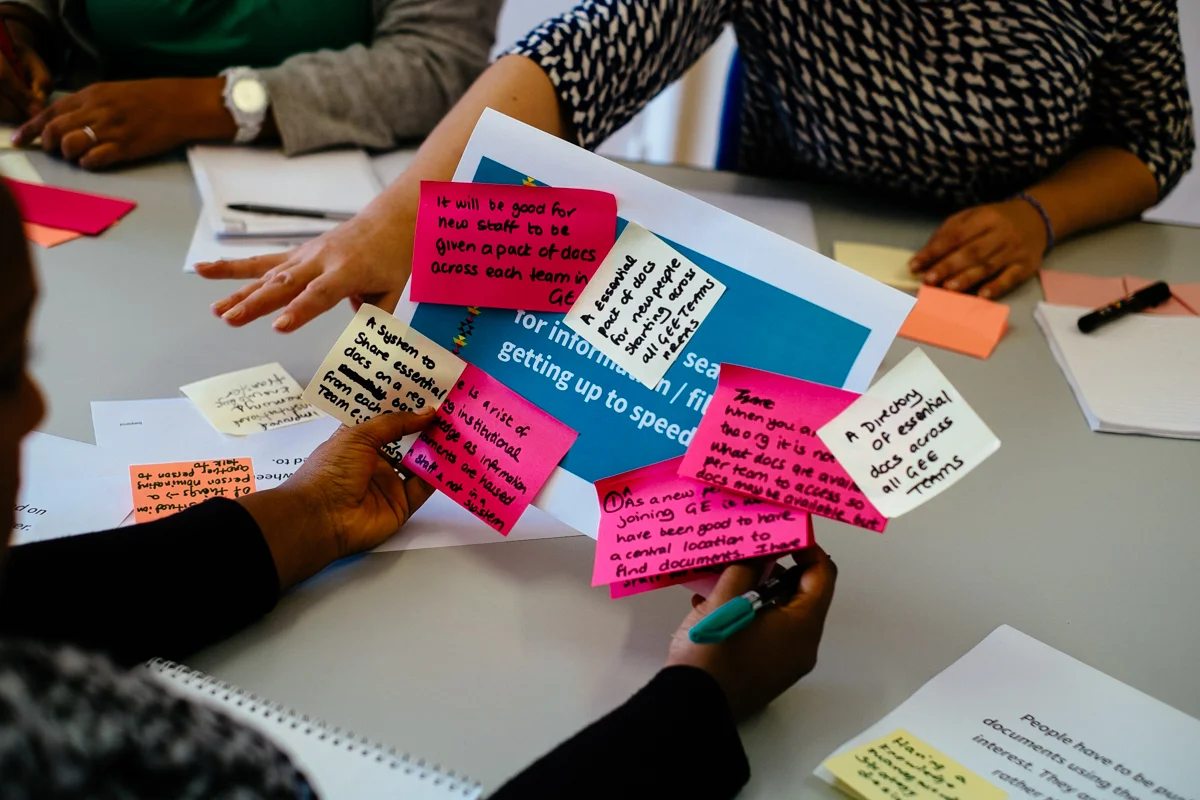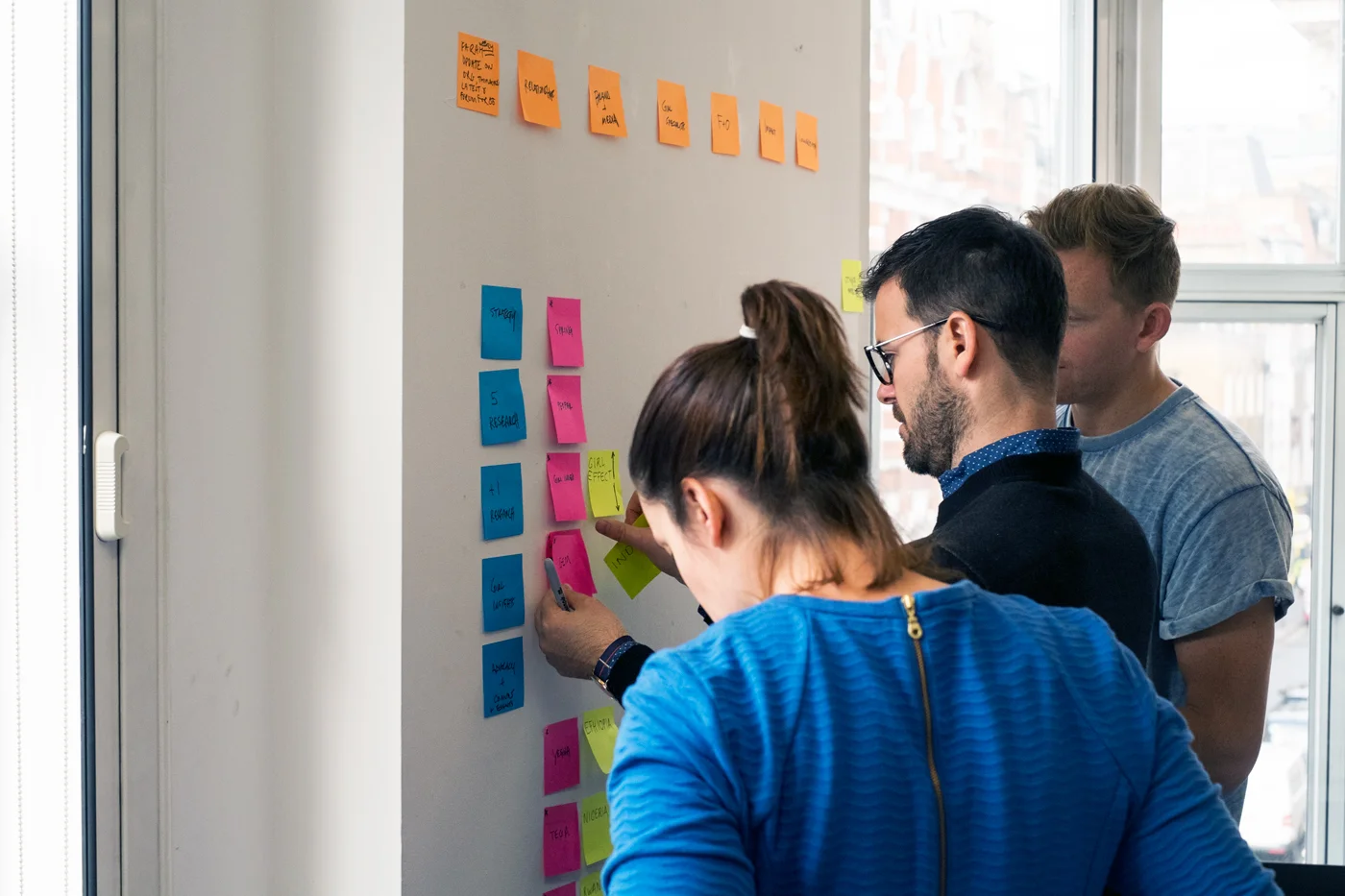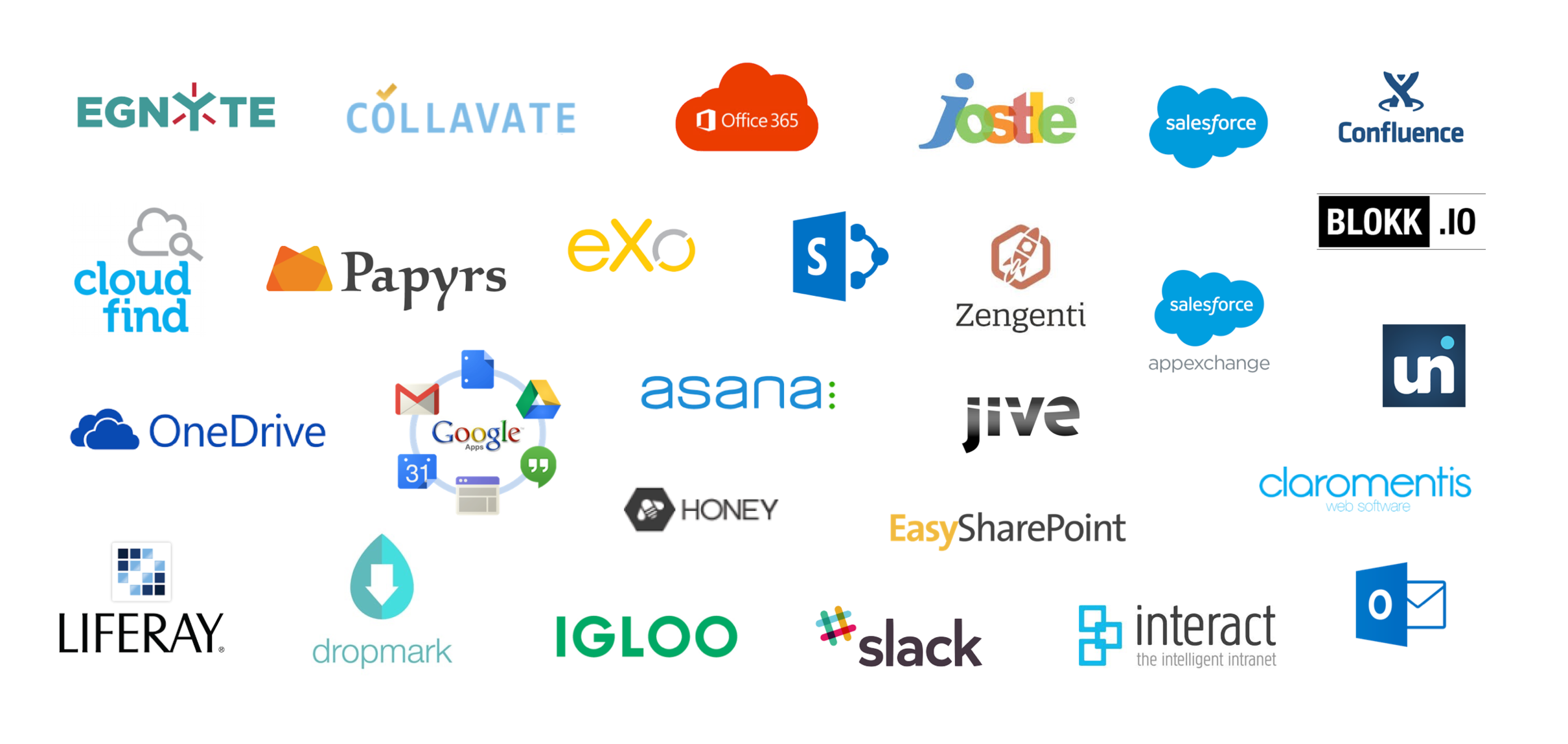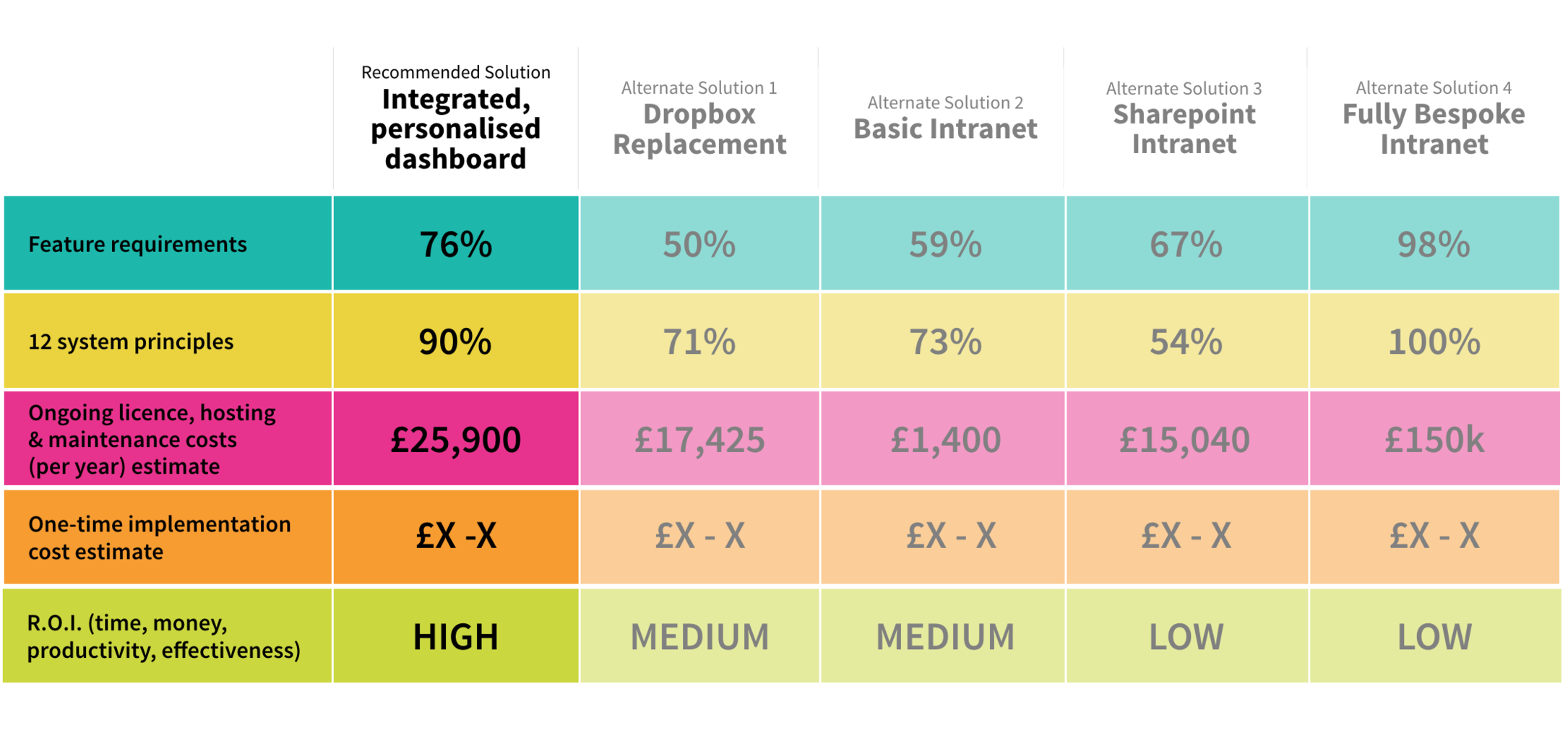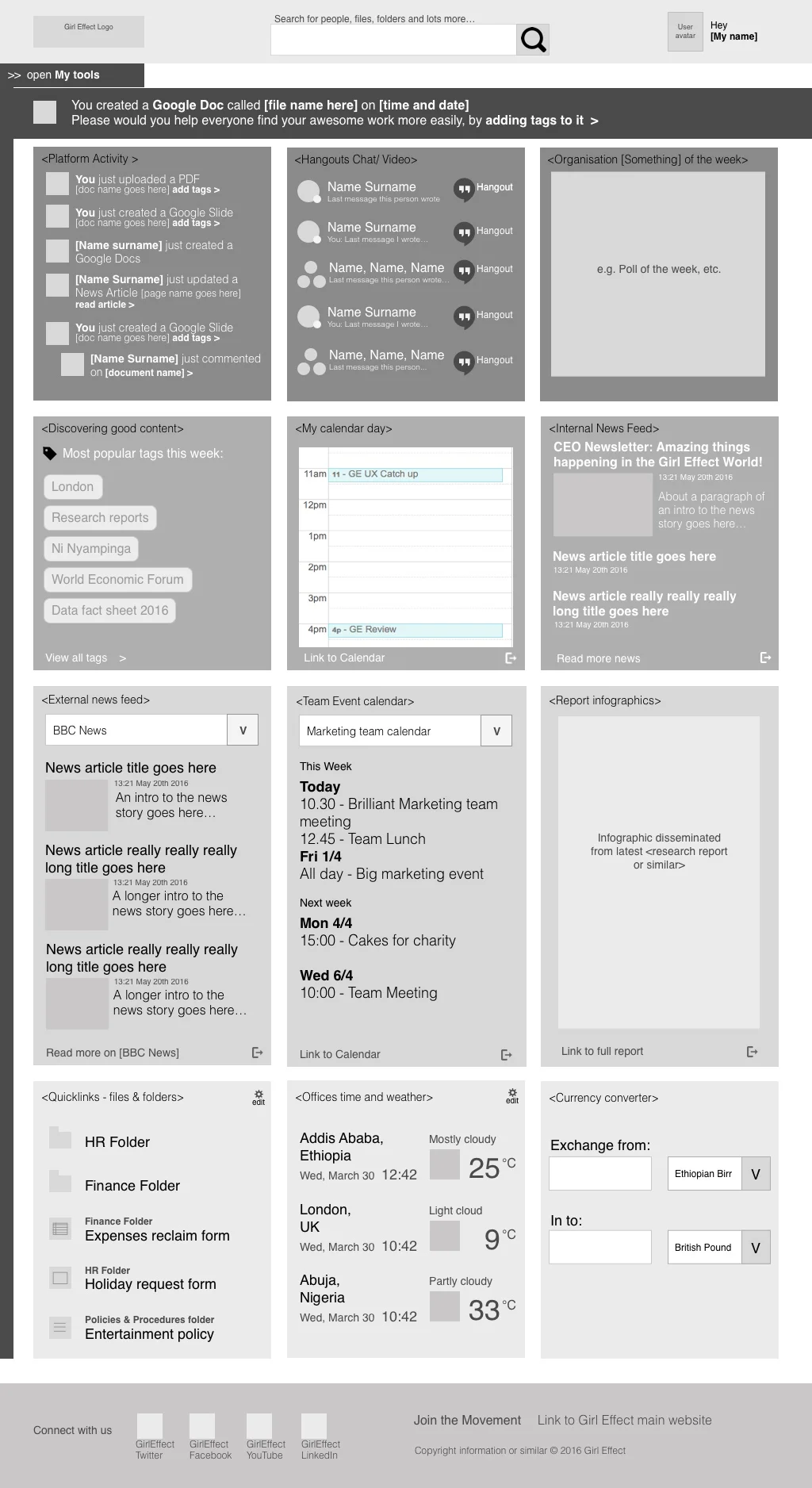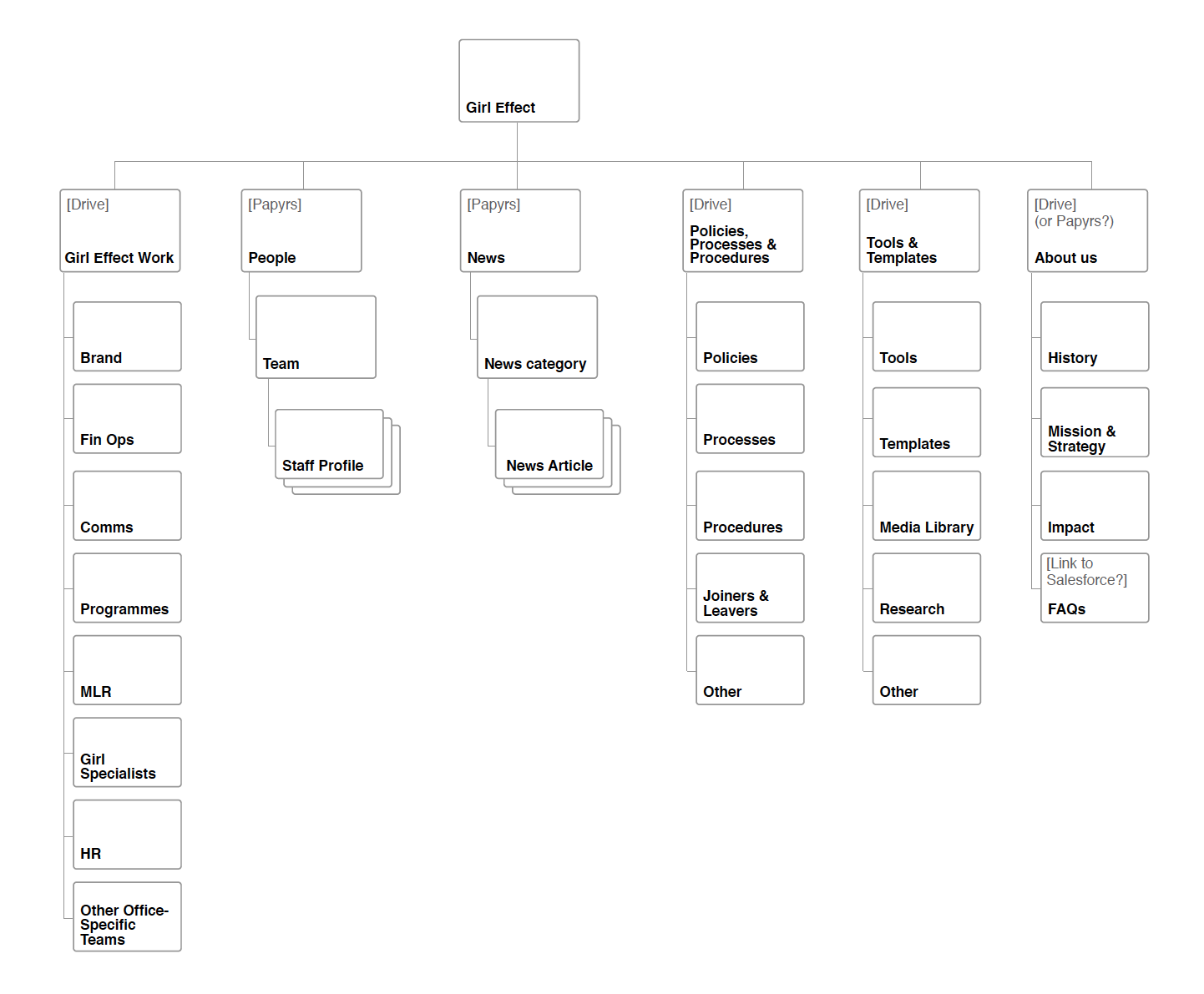Project year: 2015/16
The problem
Girl Effect was not a learning organisation. Their staff were lacking the tools, processes and technology needed to communicate and collaborate effectively. This was limiting the organisation's ability to learn which in turn was reducing it's capability. The problem was compounded due to Girl Effect's teams being based all over the world, with offices in London, Ethiopia, Rwanda and Nigeria, and ambitious plans to expand over the coming years.
The client
Girl Effect are an innovative non-profit born out of a collaboration between the Nike Foundation and the UK Government Department for International Development (DFID). Their mission is to educate, empower and inspire girls in developing countries so that they stay in school longer, have children later and are therefore more likely to be able to support their families and break the cycle of poverty.
What's different about Girl Effect is that they reach their audience through culture, brands, technology innovative research. This fusion of technology & creativity with more established charity practices is quite unique to the organisation.
My role
- I was the UX Lead on this project from our initial pitch through to the product being delivered and rolled out within Girl Effect.
- I led our winning pitch effort and presented our proposal to Girl Effect's CEO and senior stakeholders.
- I championed Human Centred Design and gained buy in to a programme of discovery which saw us interview and co-create with a cross-section of the organisation in locations across Africa and London.
- I led a product team of strategists, designers and developers through a series of design sprints where we designed and tested iteratively.
The Human Centred Design process I advocated for
- Gain buy in to human centred design - educate stakeholders on the value of discovery.
- Define & align on product vision - through Interviews & workshops with the organisation's leadership.
- Design & conduct discovery - build empathy for users through interviews & co-creation workshops.
- Synthesise discovery findings - distill interviews, co-creation workshops and existing research/ data analysis into compelling, useful findings
- Evaluate & recommend a technical solution - investigate existing tech platforms that meet users' needs. Evaluate their performance and recommend the best solution.
- Build a business case for investment - leverage research to create a convincing case for investment. Gain buy in from senior stakeholders.
- Design, build, test & rollout the product - through a series of design sprints oriented around value rather than deliverables.
Building empathy for users through discovery
In order to build empathy for our users, we conducted 53 in-depth 1 on 1 interviews with a cross- section of the organisation as well as 6 co-creation sessions with a total of 61 participants. We ensured our participants were representative of the overall organisation and interviewed individuals from different backgrounds (nonprofit sector and media/ advertising), with both short and long tenures at Girl Effect, across all teams and all levels of seniority. This allowed us to gain multiple perspectives on issues relating to the core competency of the organisation. Our research goals were to understand:
- Who are users are
- What a working day looks like for individuals
- Why existing tools/ systems/ processes/ culture were failing
- Why previous attempts to implement solutions had failed
- What kind of information/ tools staff handle
- What our solution would need to support (in terms of integration with tech/ processes, etc)
- What other factors are affecting the organisation e.g. culture, process, technology
- How users described the current and ideal state in relation to communication & collaboration
- How needs differed between locations
- How better tools could benefit the organisation e.g. efficiency & ROI
Co-creation with our users
I decided that running co-creation workshops would be a valuable addition to this project because they allowed us to involve a much greater number of Girl Effect staff in each of the locations we visited. I structured the sessions in 2 parts:
The first part was intended to gain alignment on the challenges facing the organisation, and diverge around potential solutions. I discussed the themes we had uncovered through 1 on 1 interviews and each theme was put up on the wall. Participants were invited to add their own thoughts which allowed us to enrich our findings and gain different perspectives. Then we went through each theme individually and generated a large number of potential solutions.
Co-creation workshop (part 1) in Ethiopia - pink post-it notes are challenges and yellow post-it notes are feature ideas.
The second part was about converging
Choosing which solutions or feature ideas individuals felt would be the most useful and ranking them in order of priority. Participants were then guided through a card sorting exercise where they sorted the features/ functionality/ content that their ideal solution would have. This enabled me to gain an understanding of their mental models and how we could structure the experience to meet their needs.
Co-creation workshop (part 2) in London. participants undertaking the card sorting exercise.
Synthesising research findings into meaningful, actionable insights
Once the discovery phase was completed I analysed all our interview transcripts and begun coding the findings into distinct themes and sub-themes, the process I used for this was simply to mark all the interesting quotes and begin labelling them with the topic/ theme they related to. I then went through a process of organising, naming and renaming the groups so that each one was both compelling and distinct from any others, ensuring there was no overlap between any 2 themes.
Research themes we identified
- Technical limitations inhibit knowledge sharing
- Knowledge isn't captured when staff leave
- The lack of knowledge sharing limits the effectiveness of the organisation
- Knowledge isn't effectively captured
- Knowledge sharing between offices isn't effective
Key product requirements identified through research
- File management: version control/ edit control
- Document approval/ sign-off management
- Individual/ team/ organisation wide shared calendars
- Staff profiles with names, photos, role info/ bio, Skype username
- Cloud-based file collaboration tools (e.g. google docs)
Having gained a real empathy for the users through talking to so many of them, I knew that how the experience behaved/ worked would be just as important as what it could do for them. So I decided to create a set of System Principles - that would guide how the experience should feel and what kind of experience we would create. For example - Girl Effect are a very creative organisation, many of their staff have backgrounds in marketing/ advertising, so I knew it would be imperative that the experience was beautifully on-brand, fun & delightfully simple to use.
“The Beyond team currently have the most thorough and detailed understanding of our organisation, more so even than anyone internally”
System principles identified through research
We evaluated over 30 potential tech platforms
Now that we had our list of requirements & system principles, we could begin the search for existing technologies/ products that could meet the needs of our users. We knew that building the entire product from scratch would be too costly and time consuming, so instead decided to evaluate products (or combinations of products) that were already available E.g. Google Apps + Papyrs (a simple off the shelf intranet tool).
A selection of the 30 products we evaluated.
Products were rated for:
- Their feature offering (against our requirements list)
- How well they aligned with our system principles
- Integration with existing Girl Effect platforms (e.g. salesforce)
- External implementation costs (3rd party costs to implement)
- Ongoing costs per year (e.g. maintenance/ licence costs)
- Internal implementation effort (the level of effort to rollout within the organisation e.g. system/ content migration requirements)
We documented our product research and evaluation in a spreadsheet (screenshot below). Features were prioritised from top to bottom and each platform was given a score out of 10 for it's ability to offer the feature and their
We also evaluated each solution against a set of system principles that we felt were important to staff & the organisation. Additionally we rated solutions for their ability to integrate with existing platforms, costs - one off and ongoing (hidden) and internal implementation effort. This allowed us to evaluate each solution thoroughly and put ballpark costs to each option.
Click here to view the full spreadsheet
Presenting 1 recommended solution & 4 alternatives to the organisation
I simplified the detailed solution evaluation spreadsheet into a simplified top-level matrix - showing how they performed and estimates for what solution would cost the business.
Our recommended solution and 4 alternatives (implementation costs have been removed)
The solution that best met the organisations various needs, as well as being the most logical option in terms of costs - one off and ongoing was:
- Google Apps For Work (GAFW) (Gmail, Drive, Docs, Calendar, etc)
- Papyrs - an off-the-shelf intranet plugin (that integrates with Google Apps For Work)
- A Custom Dashboard built by Beyond that would act as a highly branded and customised UI layer
This solution also offered:
- Powerful integration with intranet products, other platforms & extensions
- Powerful mobile apps for a range of devices
- Offline functionality
- No licence/ subscription cost for nonprofits
- Free ongoing maintenance and product updates
Identifying dependencies for success
During our research we uncovered many findings that were outside of the remit of our piece of work. These findings related to Girl Effect's culture & people, their process and their I.T. strategy. We delivered a set of recommendations which we felt were important to act on if the organisation was to meet it's goals for the project. Our recommendations led to the organisation hiring a head of I.T. internally - a function which they had been outsourcing. Other key recommendations we made were:
- Senior management must champion and advocate the solution
- Use simplified, unified consistent naming for teams across the organisation
- Institute more frequent, effective opportunities for intra-team & intra-country communication
- Implement an employee exit process which ensures effective knowledge capture and handover
- Make individuals in each team responsible for managing their teams’ information
Building a business case for investment, and gaining buy in from the CEO & senior stakeholders
In the next phase we had to demonstrate the business case for investment in the full design, build and launch of the product. Because the problems we were aiming to solve were so important to the organisation, we had to present to the CEO.
Over a couple of days, myself and a designer created an initial product vision concept to visualise what the end product could look like. This helped the CEO understand what she was investing in. I created a presentation that showed the concept alongside quotes from our interviews demonstrating the need for each feature. I also included how the product would benefit the organisation e.g. increasing efficiency. This was an effective tool in persuading the CEO to invest in the product, and demonstrated what the product could look like while showing powerful quotes from Girl Effect staff demonstrating the need for the product.
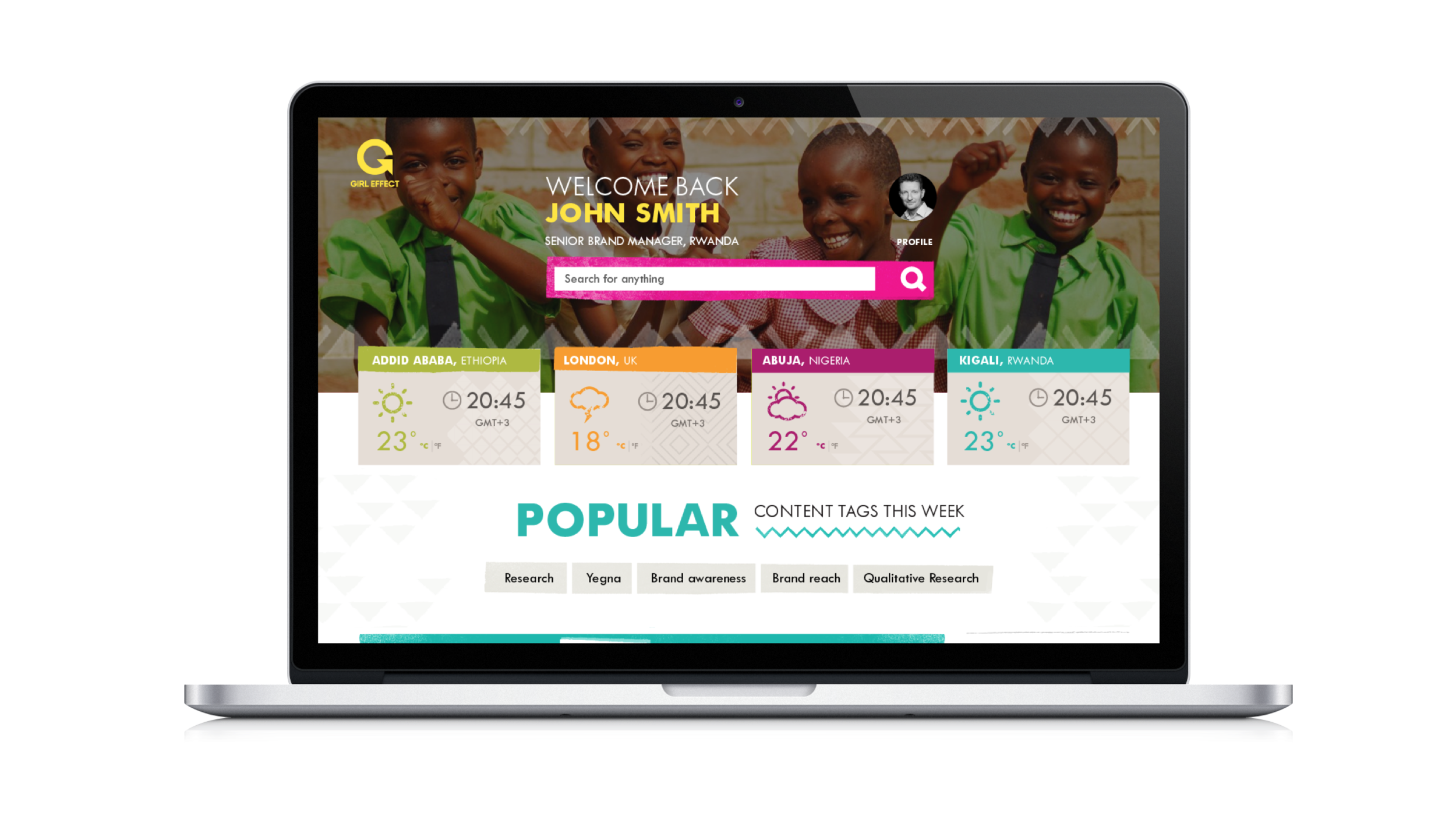
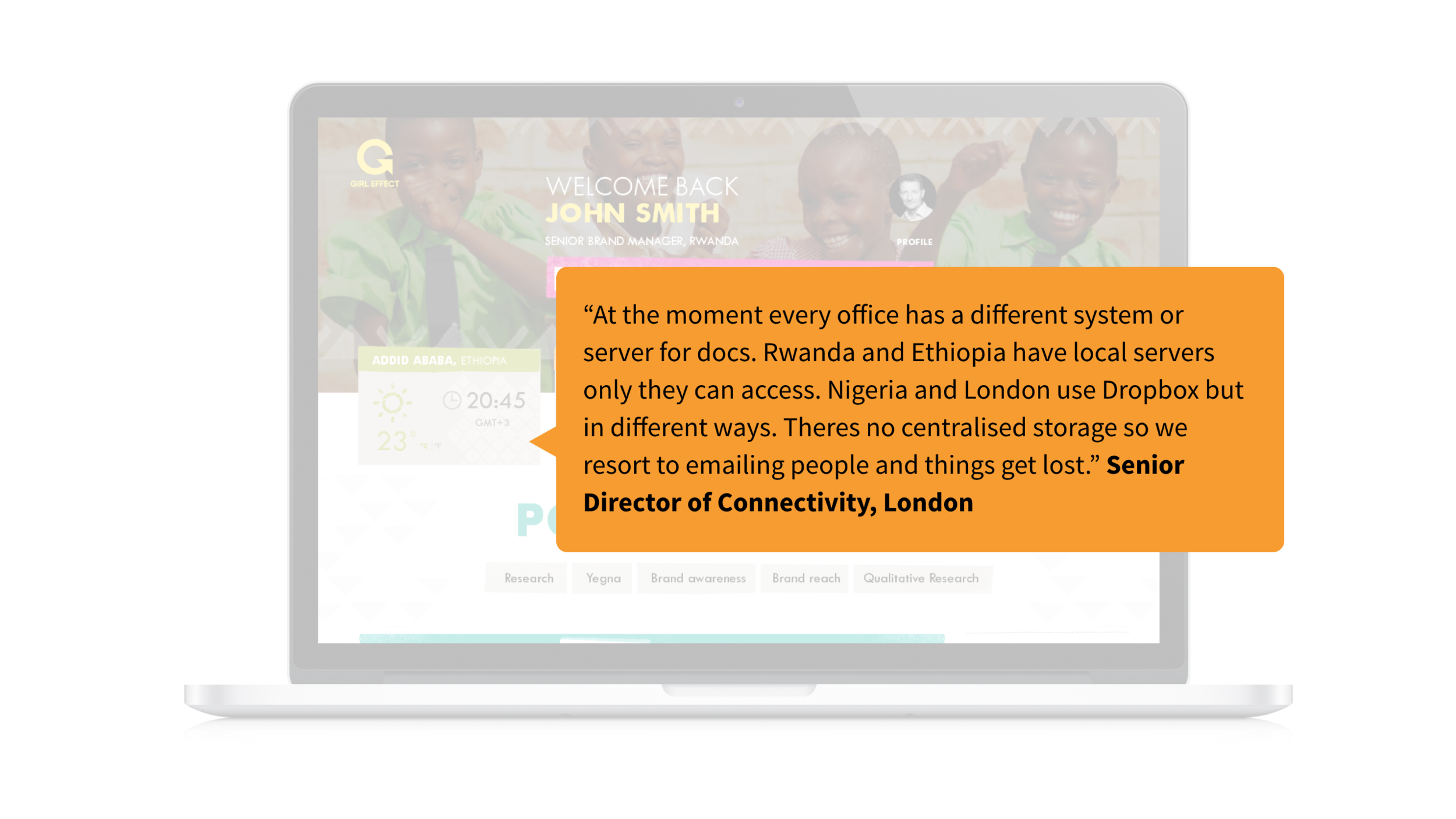
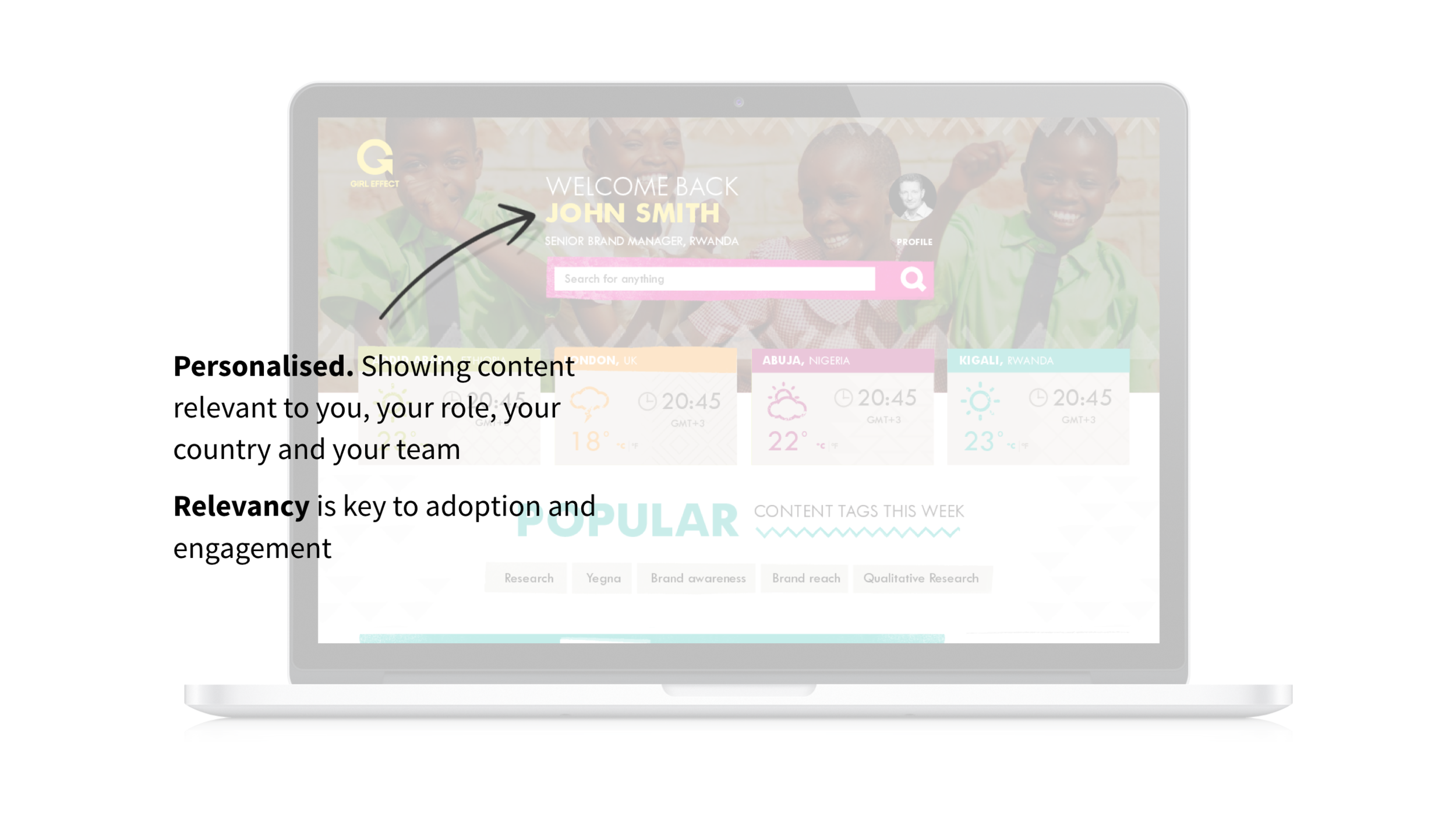
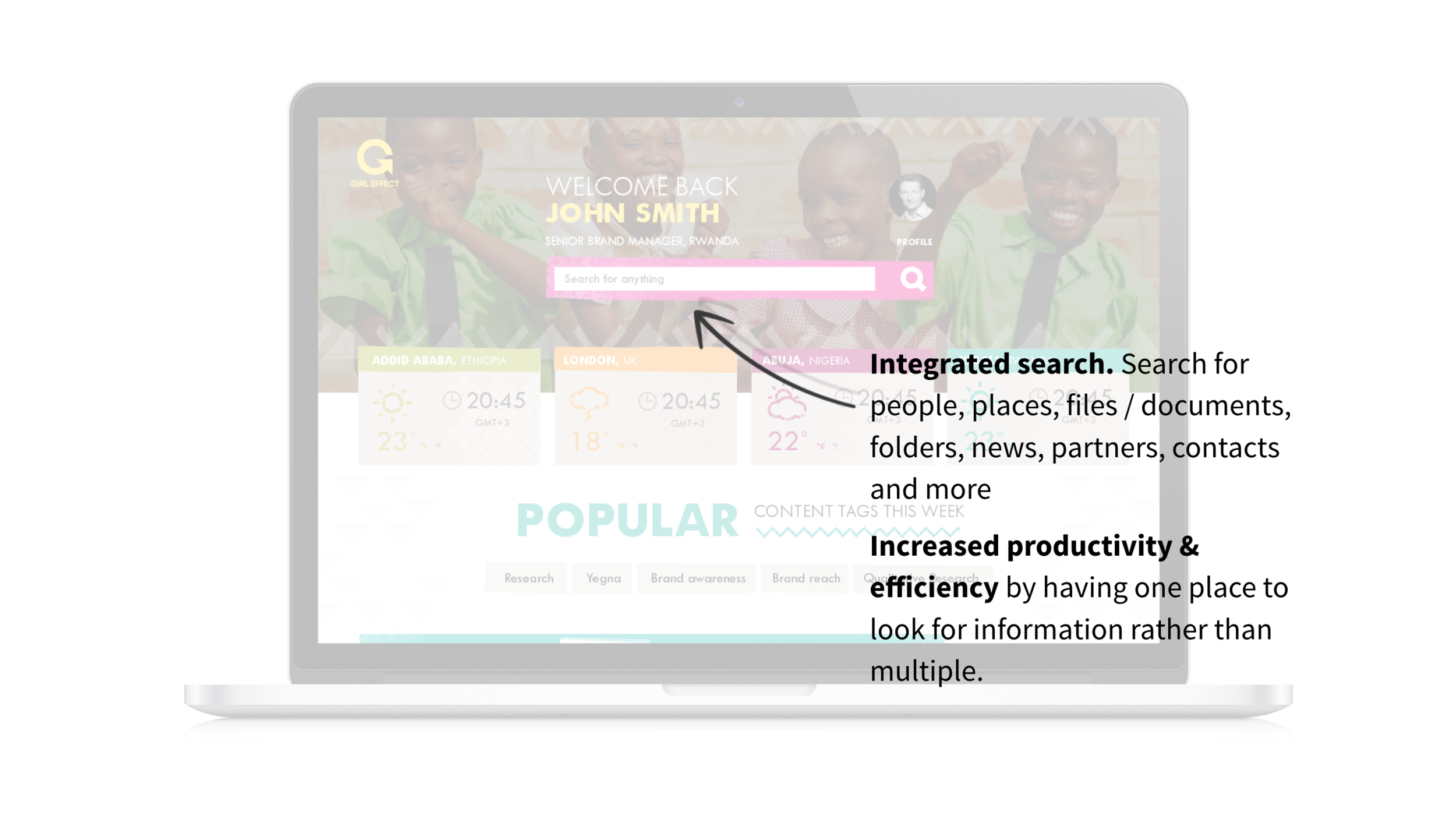
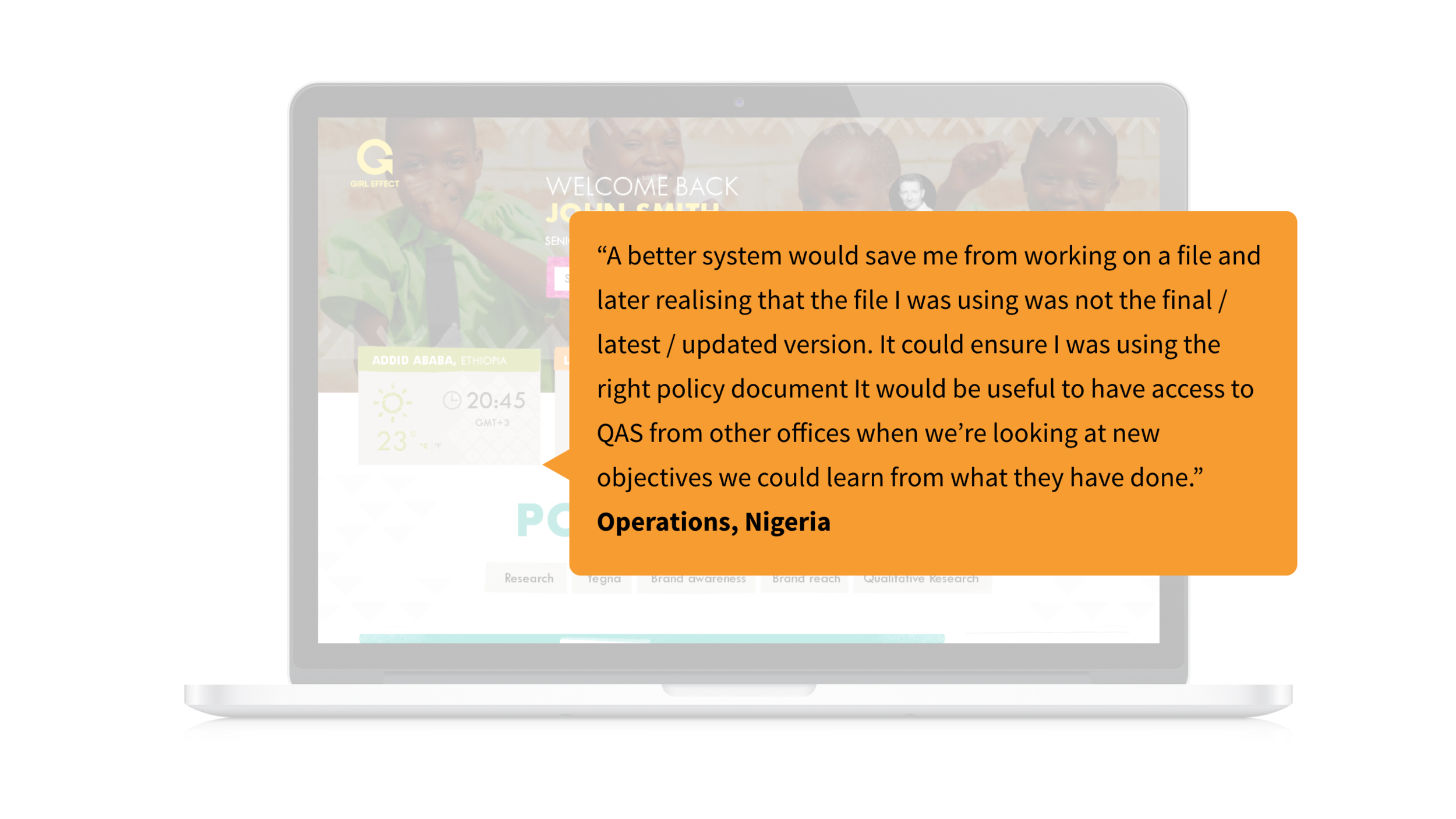
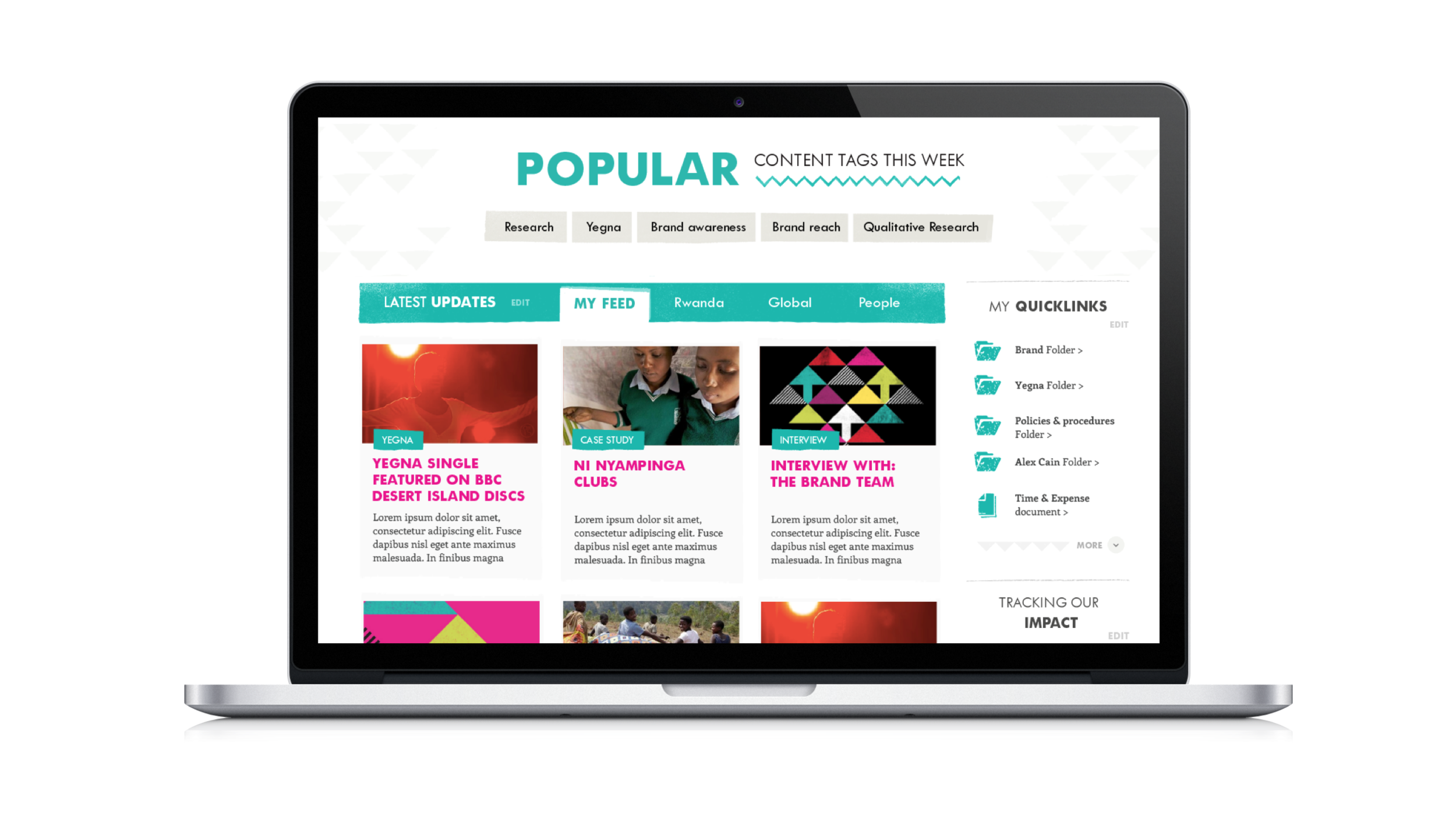
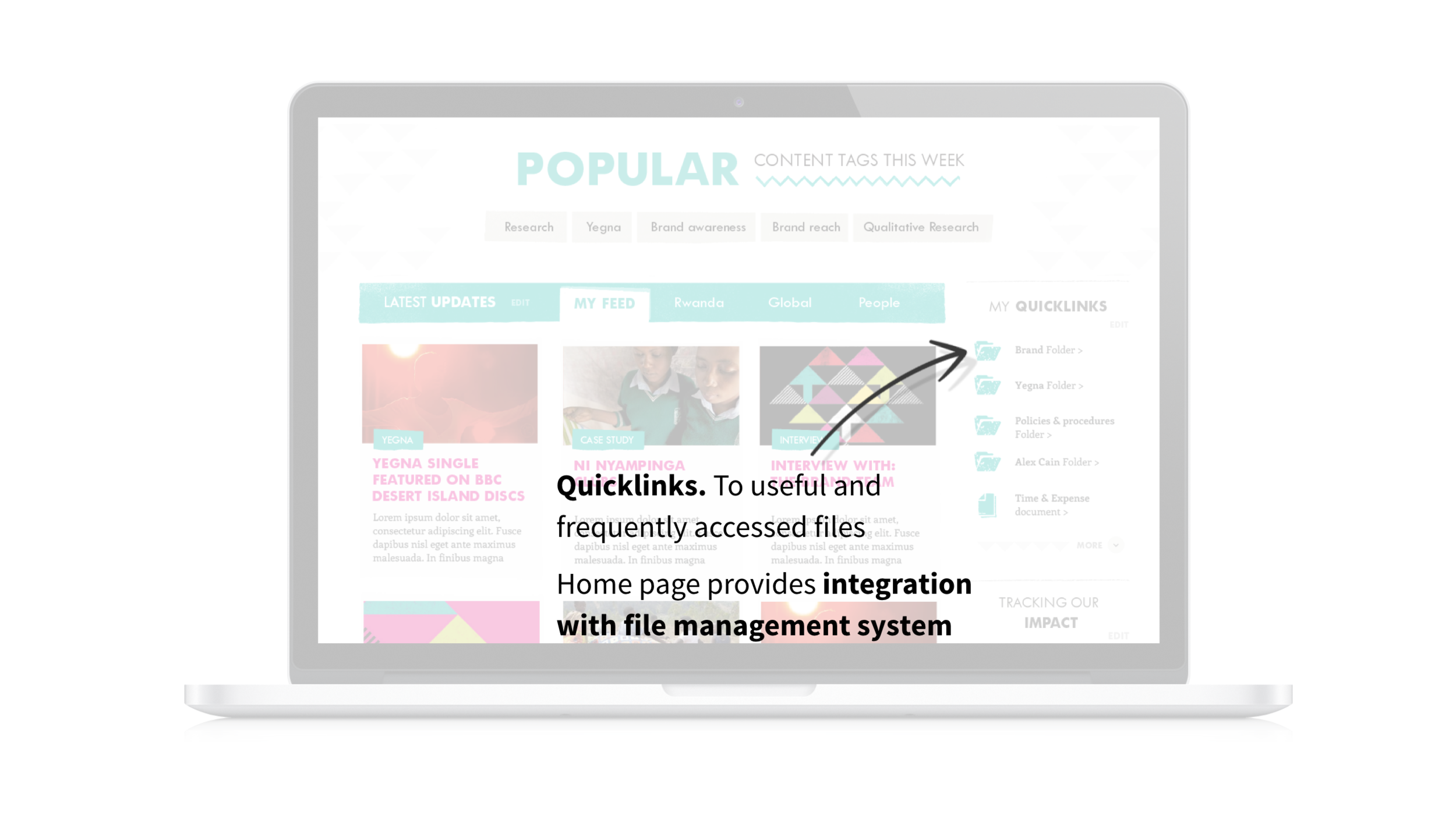
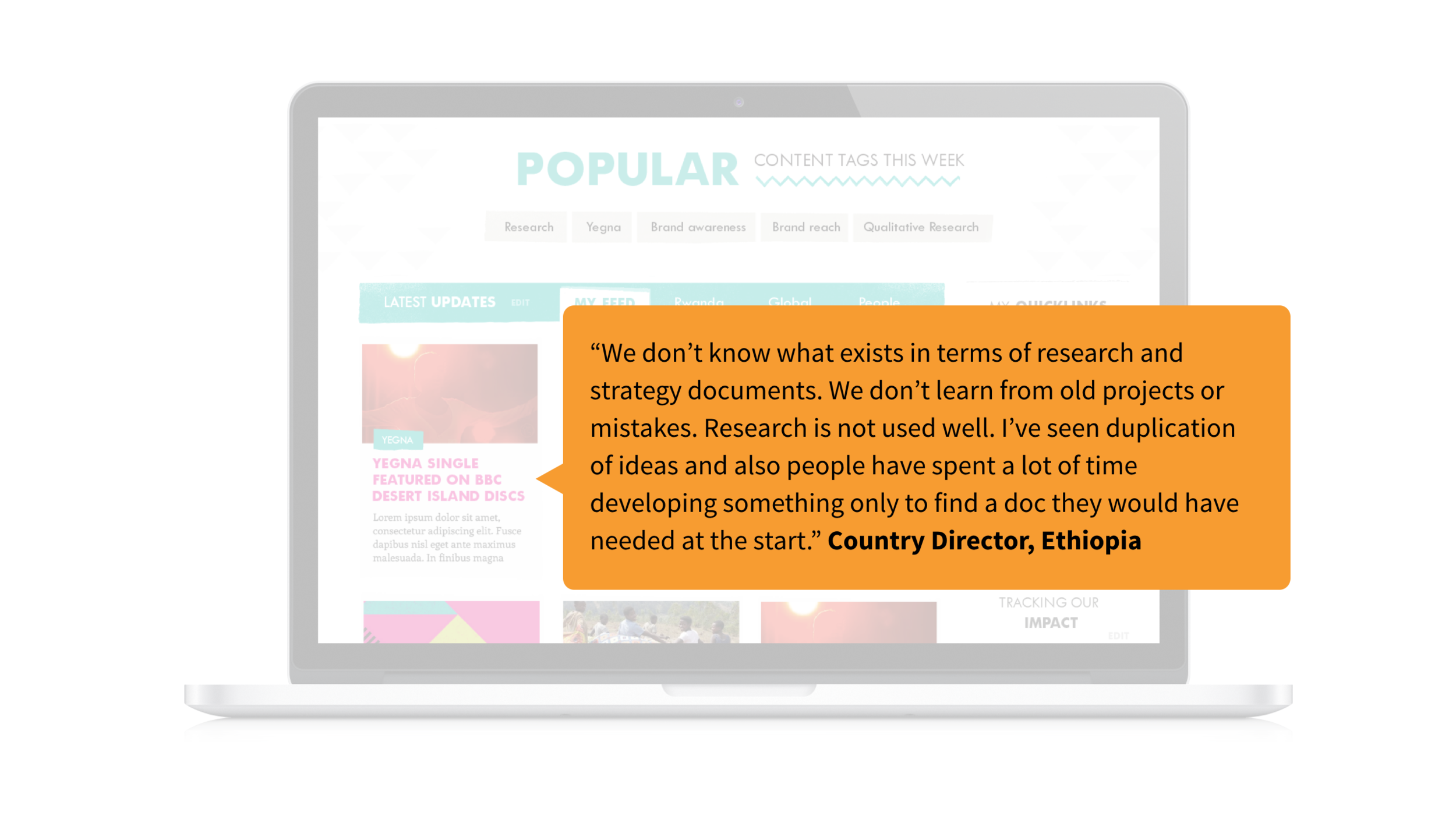

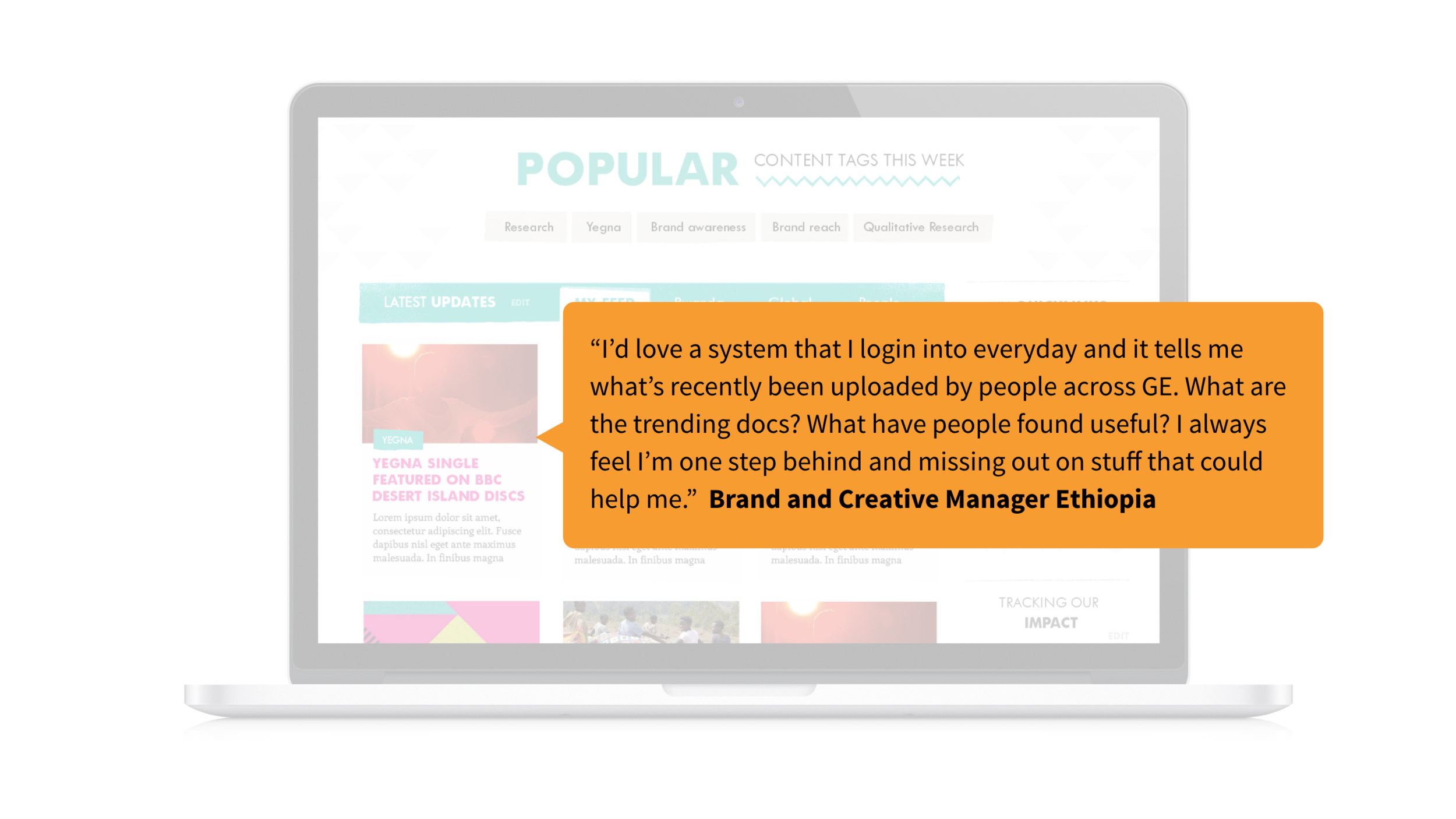
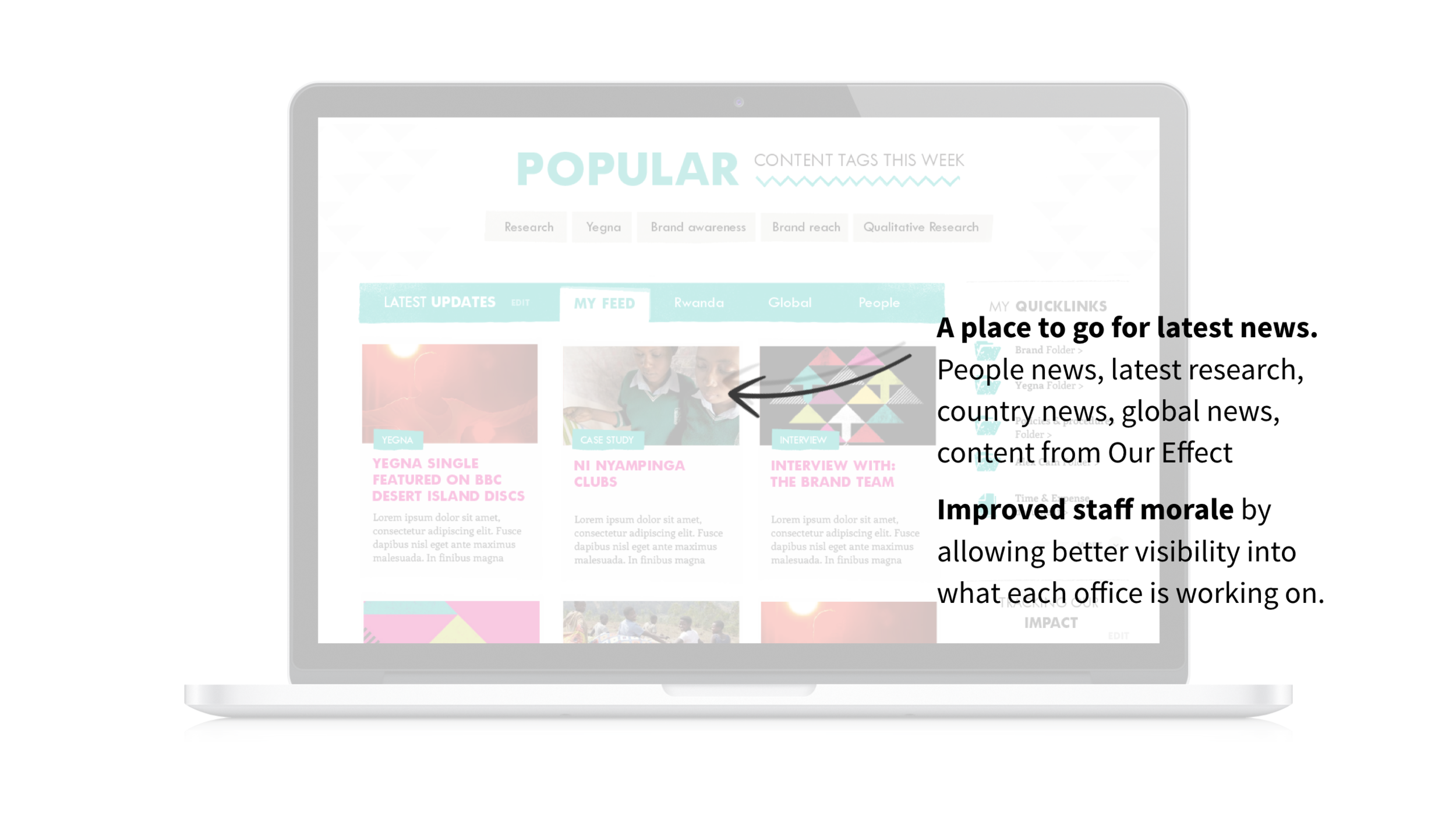
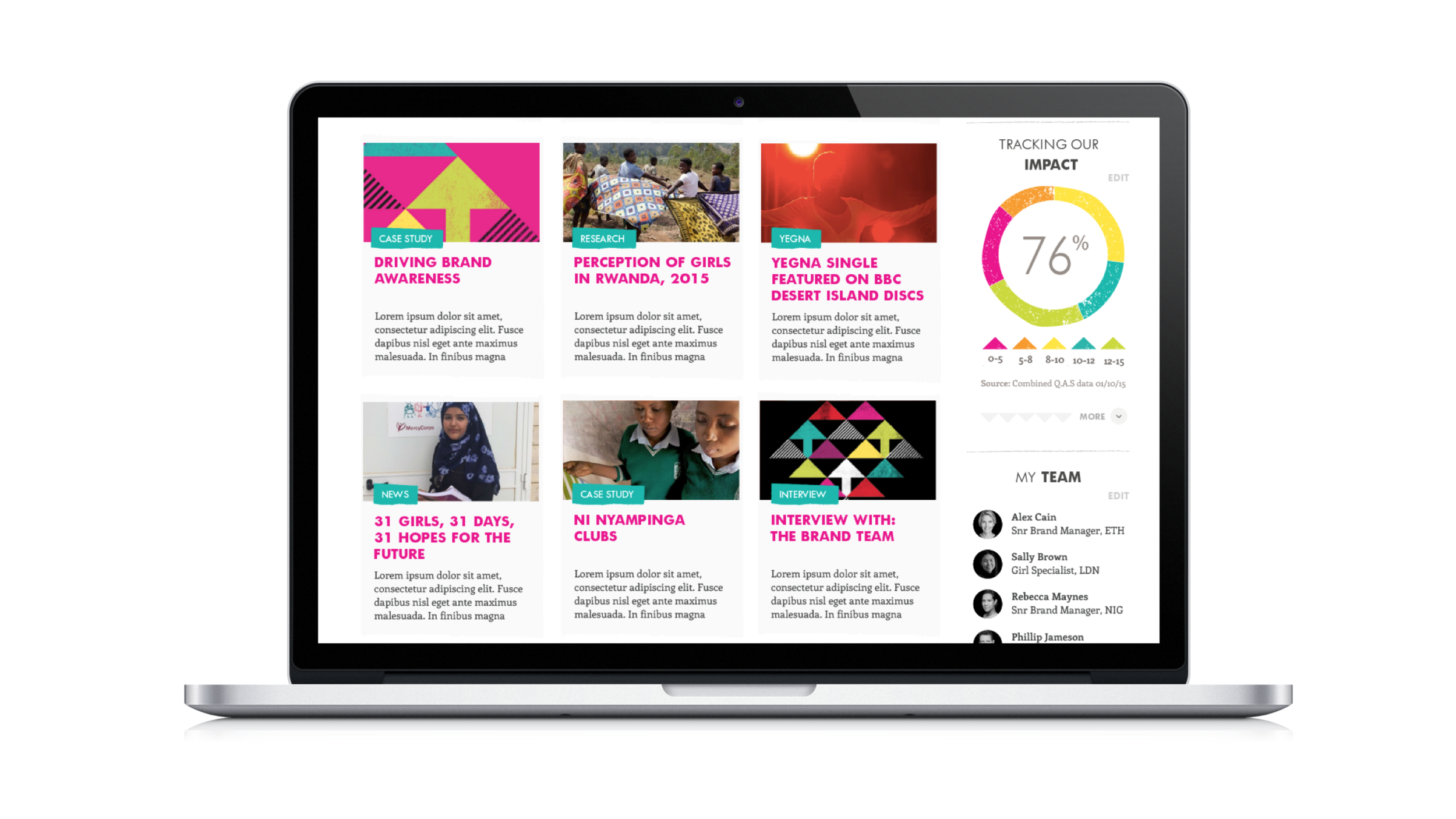
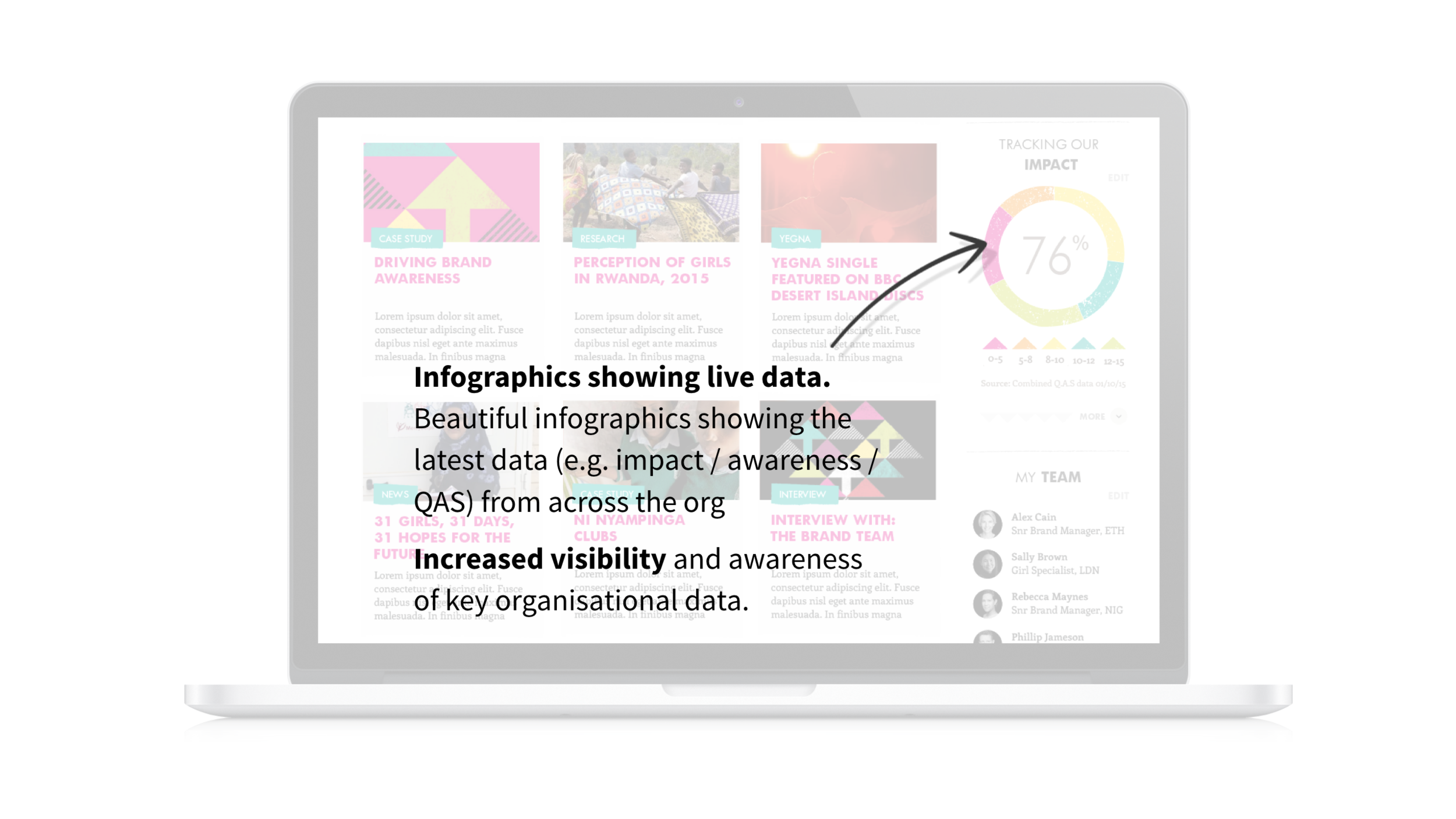

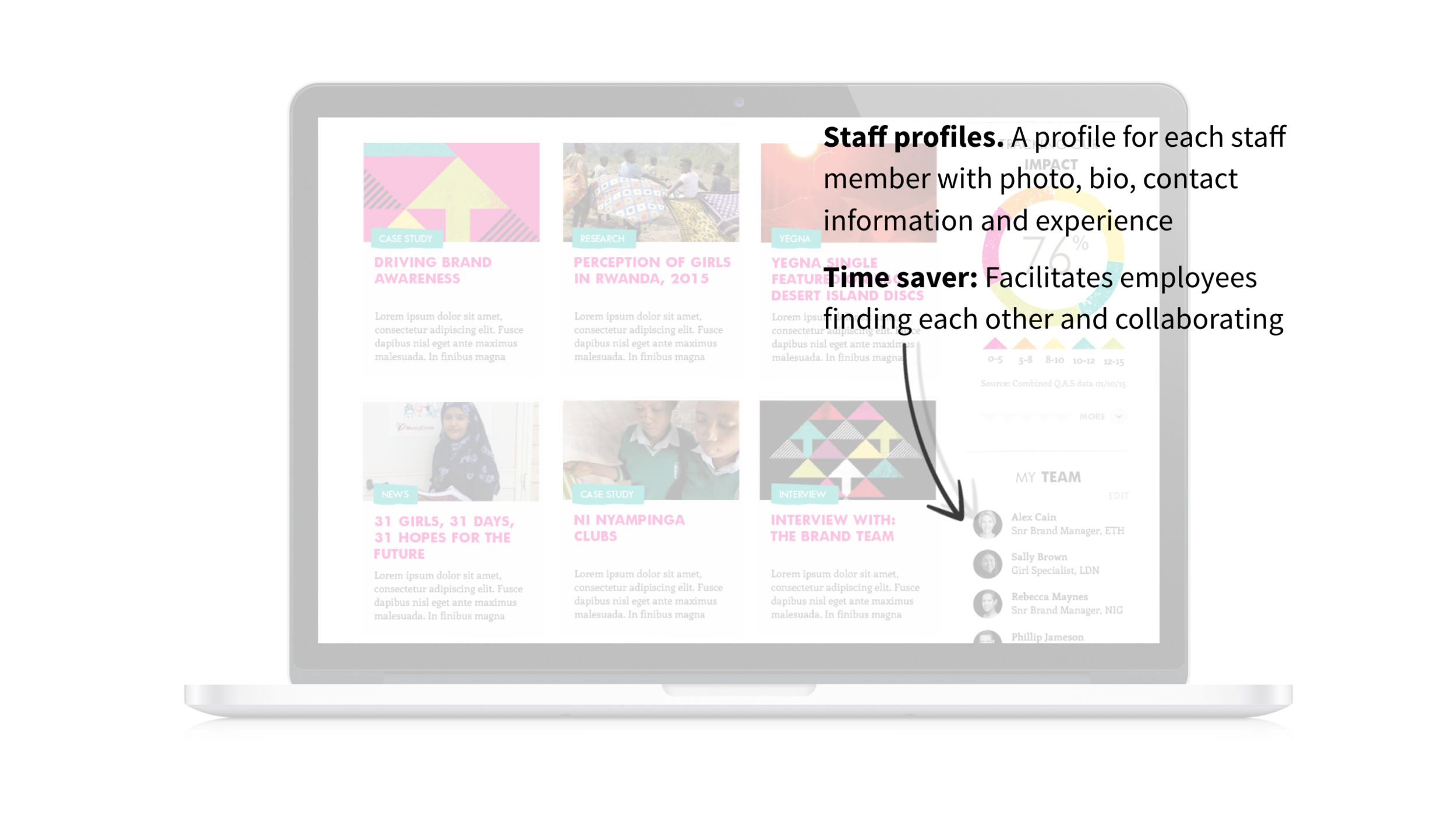

“We are an R&D organisation but we are not capturing our knowledge. This is having a huge impact on the business”
Through our research we had learnt that the organisation was suffering as a result of the lack of communication and collaboration tools. We uncover many examples where these issues had led to serious, measurable financial losses due to:
- Commissioned work (e.g. research reports) being repeated/ duplicated or not used
- Assets/ deliverables from commissioned work being lost
- A lack of effective on/ off-boarding and poor handling & management of files (e.g. important documents stored on personal desktops)
- When staff leave, their learnings are lost, their replacements have to start again. New employees waste time getting up-to-speed
This enabled us to calculate a sum that we could estimate our product would save the organisation each year. In addition to cost savings, senior stakeholders within the organisation told us that the product would bring them:
- Increased organisational effectiveness
- Improved staff morale & productivity
- Increased R.O.I.
- Improved employee on & off-boarding
Securing investment and moving into ideation
Once we had secured buy-in for the product, we begun a programme of 2 week design sprints with a full product team comprising of 1 UX lead, 1 Design lead, 2x Frontend developers, 1x Backend developer, 1x Tech lead and 1x Product manager.
I begun sketching out some initial ideas for the dashboard while our tech team were busy investigating Papyrs and Google Apps For Work to enable them to determine flexibility & customisability. Their priority was investigating the APIs between the 2 products - as theses would determine which data-points we had at our disposal and be the main constraint on the experience.
I created the first-draft epics, user stories and acceptance criteria for several user groups including: standard users, girl Effect admins/ content managers and system administrators.
I begun sketching out ideas rapidly, drawing individual features as well as an overall framework for the experience. I ran collaborative sessions with a visual designer and frontend developer and used diverge/ converge techniques to generate and refine the designs. Over the few days that we were sketching, the tech team were getting to grips with the APIs and were able to give me more guidance around the feasibility of the features/ functionality being proposed.
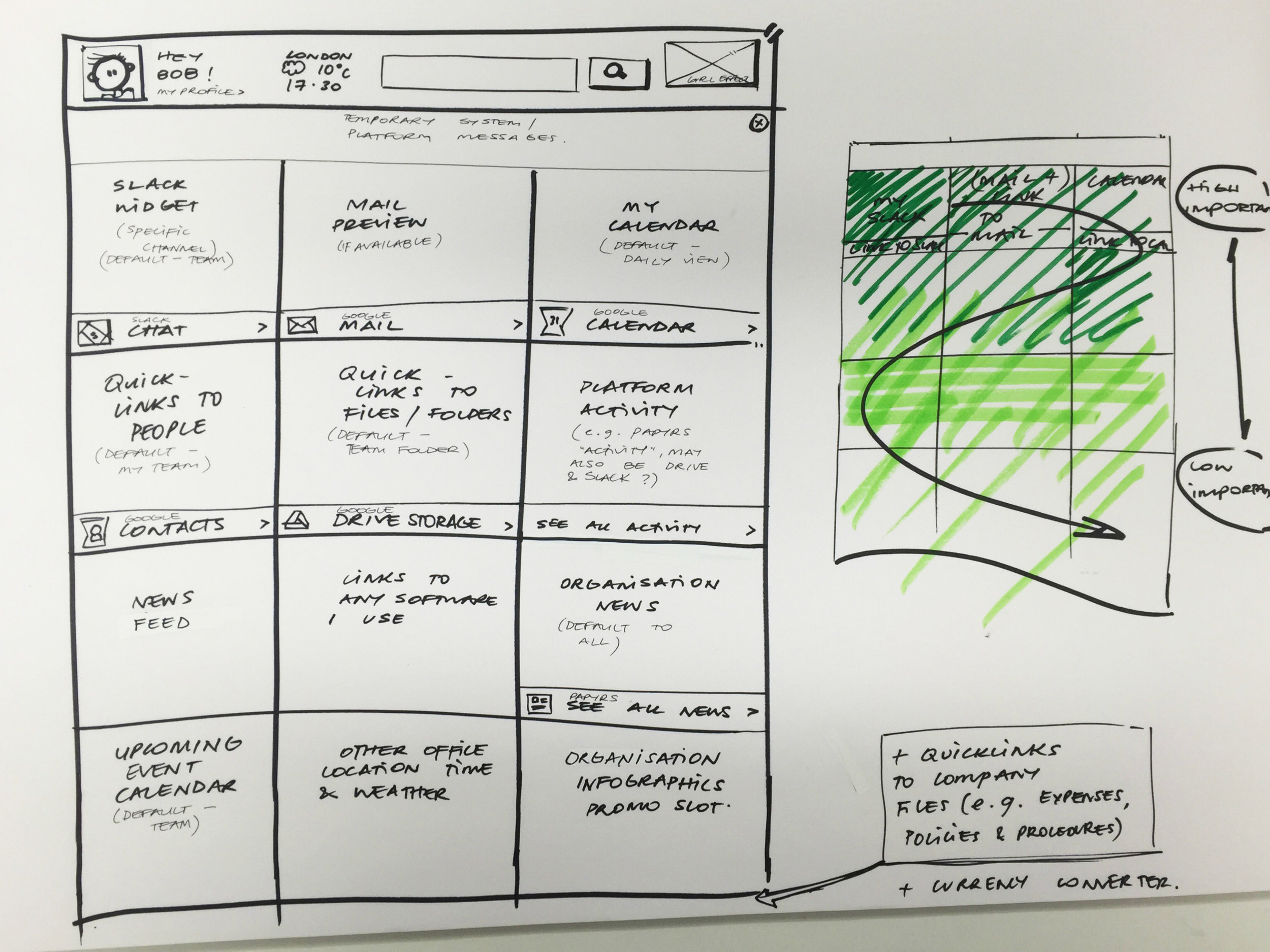
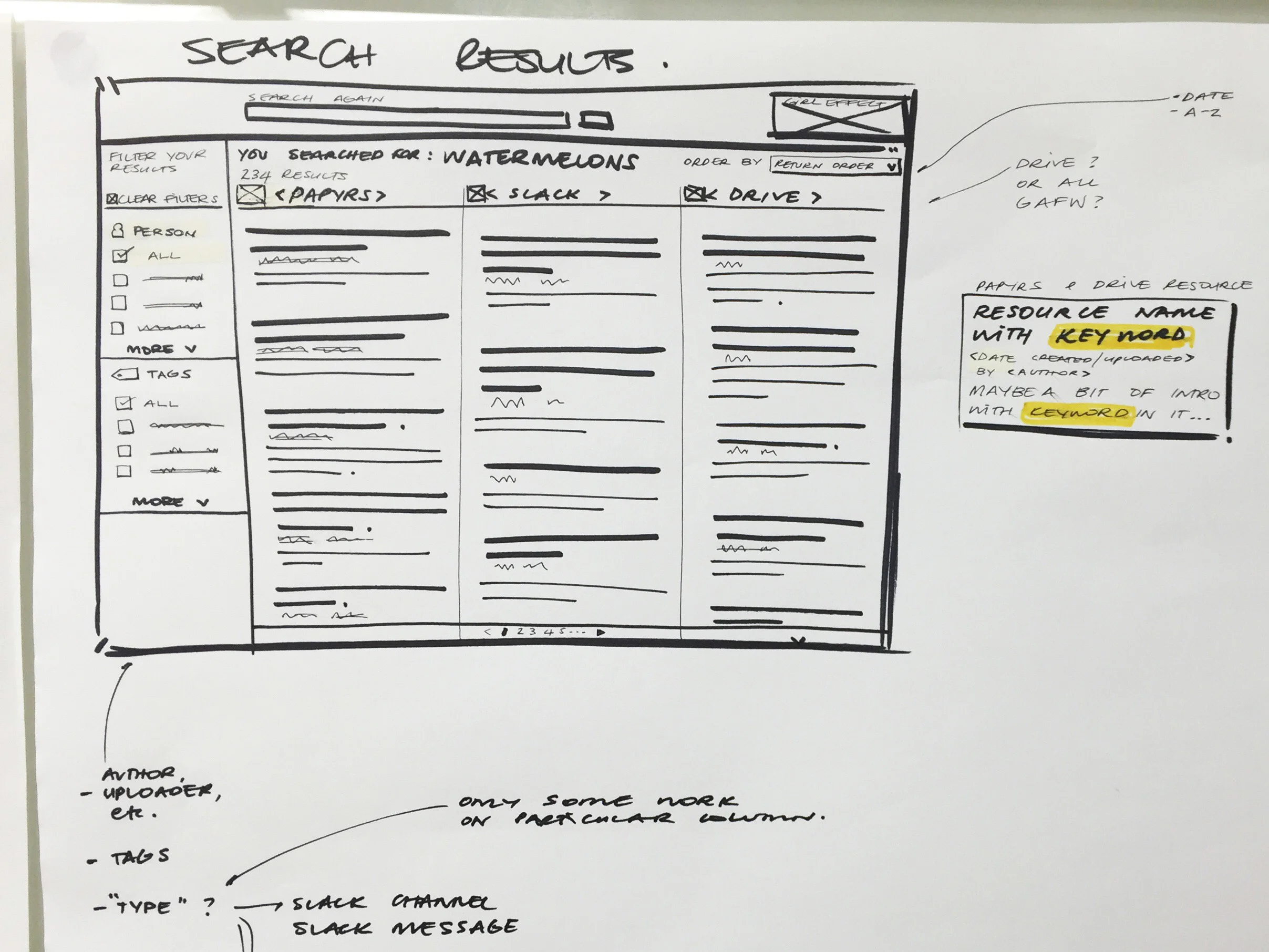
At the end of the first sprint we had a work share with the client where we presented the findings from our tech/ API investigation. I also walked the client through our sketches to get them on board with our thinking and gain their feedback.
In the second sprint I begun working in Sketch App and creating more detailed wireframes for the various screens within the Dashboard. I went through several iterations, experimenting with different layouts and arrangements of the content and got feedback from the rest of the team before settling on the design below which aligned best with the mental model of information that users had created in the co-creation sessions I ran.
Dashboard wireframe
In one of the later sprints I created this information/ taxonomy architecture that shows the structure of the experience and how the platforms integrate. This architecture enabled our tech team and the client to setup GAFW (e.g. Google Drive) using the correct structure and naming conventions.
Platform architecture & taxonomy
Designing the product iteratively
I continued working closely with the visual designer, and together we refined the design iteratively and continually to adjust features in line with new discoveries our tech team were making about the platforms and their capabilities.
One challenge we overcame was that the organisation completely rebranded when we were in the final stages of the product design, this meant we had to adjust the interface quite drastically. Additionally, the branding agency had given little thought to how the brand would look and feel on a digital device. We evolved the brand into digital and created a set of simple interaction guidelines to inform how the brand should move, interact and animate on digital devices.
Our platform was designed to work on all devices - but was optimised for desktop as this was the preferred device of our users who spent most of their working days in the office on their desktop/ laptop.
We piloted the product with a select group of champions within the organisation. They helped us to refine the product over the remaining sprints where we ran cycles of ideation and validation - designing and building features, then testing them with real users.
Giving ownership & responsibility to the organisation
Up to this point we had been liasing with a number of stakeholders from across Girl Effect, and they had been part of the research and design process. But at this point I realised that it was crucial that the product be owned by the organisation itself. The product needed to have representation from each Girl Effect team, rather than being owned by the team that had financed the product.
With this in mind I advocated for the establishment of a Product steering committee. The cross-functional committee gave ownership and responsibility for the product as well as the wider piece of organisational change required for the product to be successful.
Devising a launch plan, content strategy & programme of behaviour change
Through our research we identified that the main challenge to the success of the platform was the bad habits that were deeply entrenched within the organisation (e.g. staff storing files on their desktops where they are inaccessible to others and at risk of being lost if the hard drive fails). These bad behaviours were prevalent across the entire organisation and this meant the entire organisation needed to change it's mindset and culture... No small task.
Working with the Girl Effect team, we created a launch strategy & timeline that would ensure the platform was rolled out effectively. Our launch plan covered:
- Pre-launch activities (1 month before launch)
- Create an internal competition to name the platform
- Develop a programme of communications (e.g. posters & emails) to drive awareness of the platform and what it does
- Create a calendar of events: pre-launch, launch day, training & on-boarding, post-launch
- Implement tools/ processes to gather user feedback
- Launch day
- Create a programme of events, communications & training to launch the product
- Platform launched together with new branding & proposition to maximise impact
- Gain feedback from users through conversations & observation
- Post- launch (3 months following launch)
- Use metrics to monitor launch performance
- Gather feedback from users
- Establish an ongoing plan for further iterations


